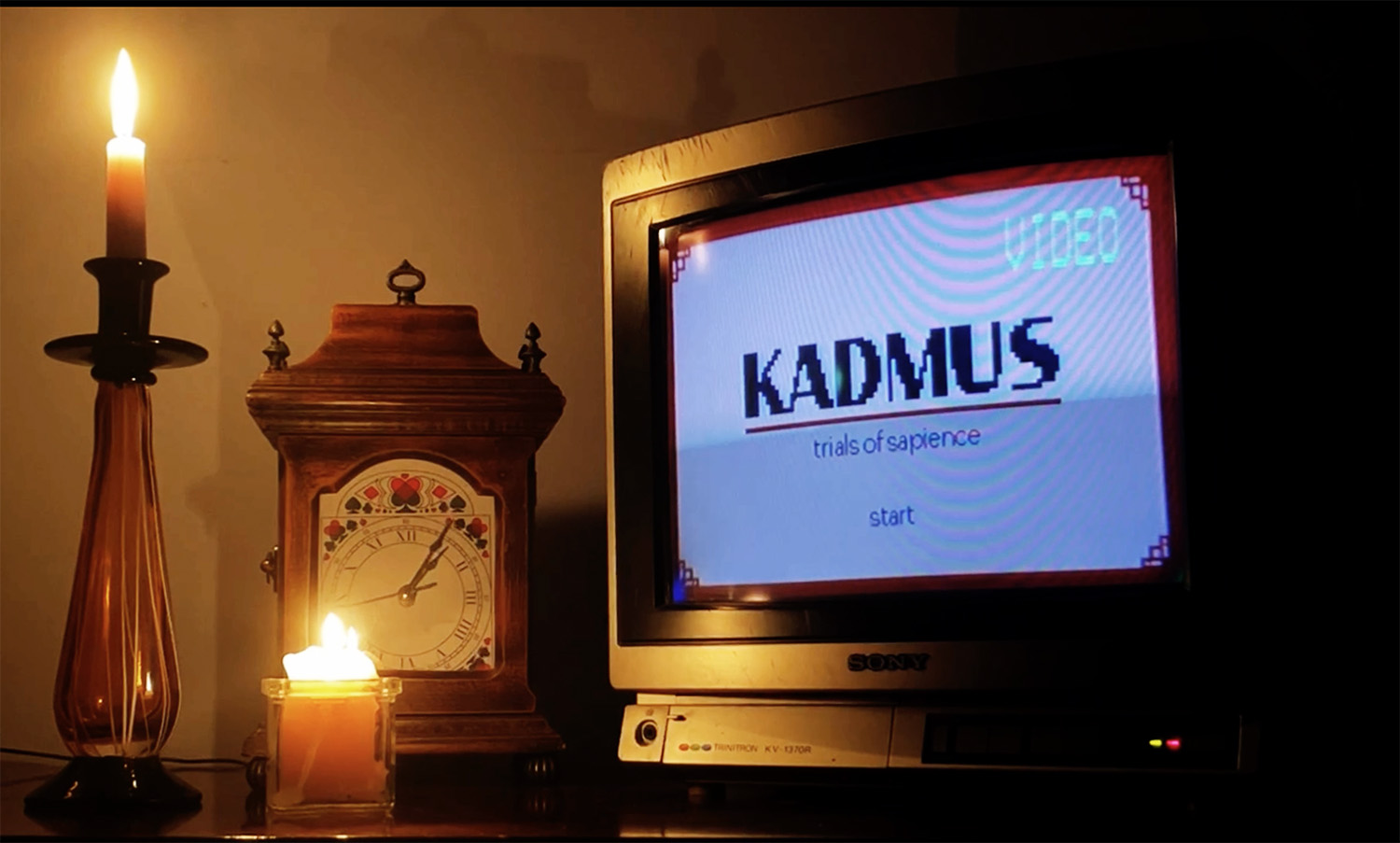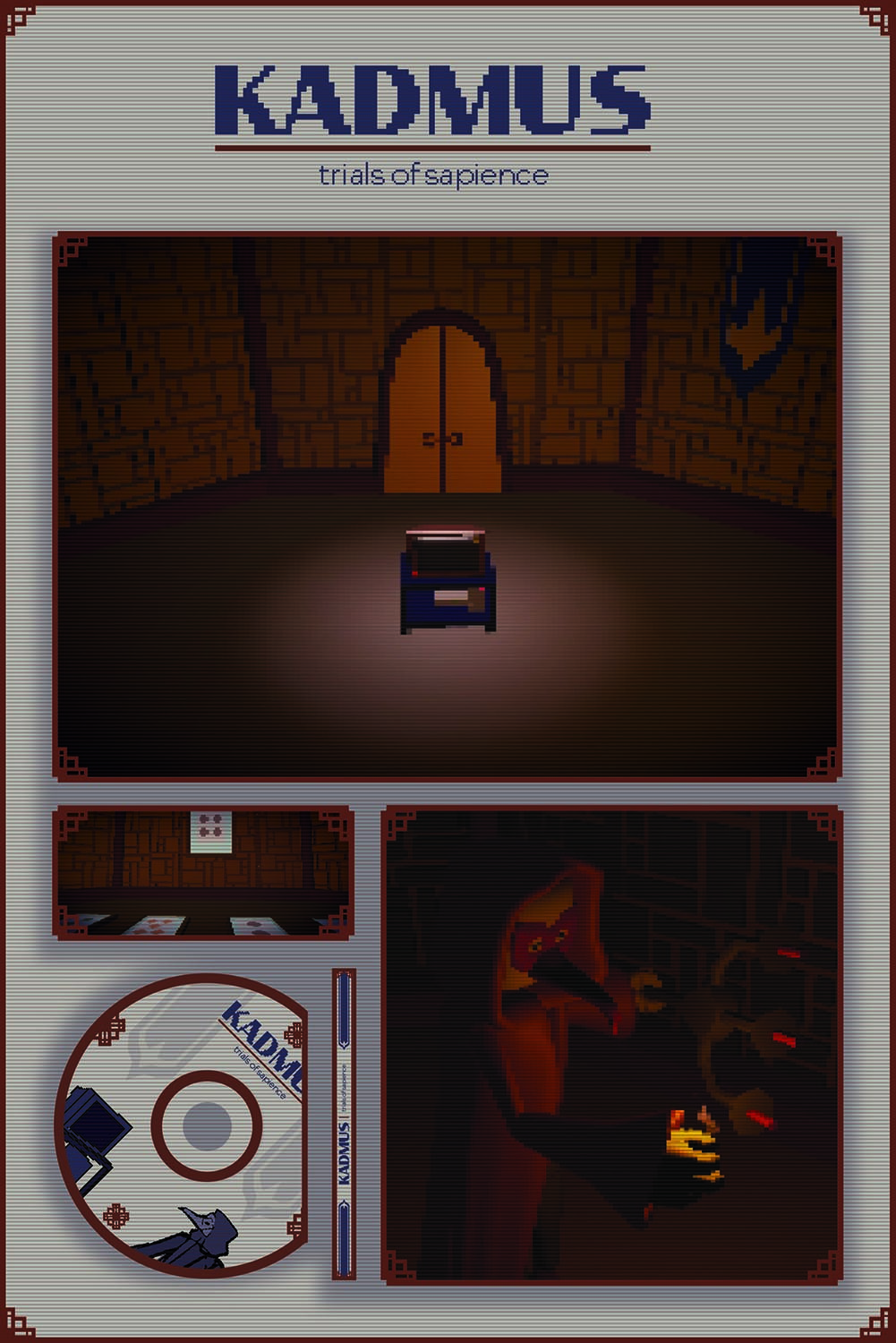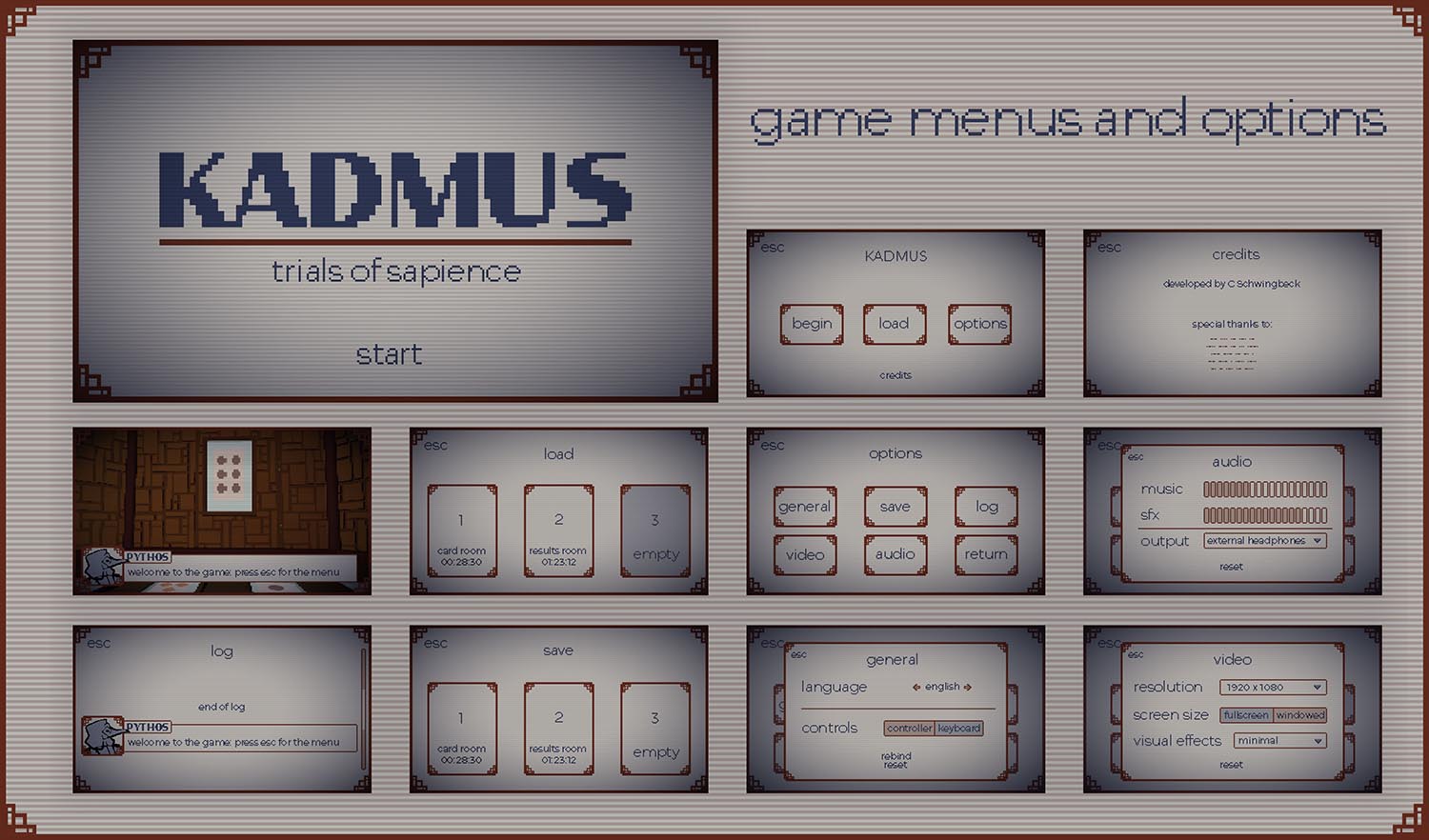Artist Biography
CARLYN, creator of KADMUS: trials of sapience, originated in Northborough, Massachusetts. Growing up they expressed curiosity and creativity, with a special interest in illustration and puzzle games. They developed many stories and characters with friends. These interests have continued into their current work. They continue to illustrate characters, explore worldbuilding, and develop narratives and character relationships. They often treat these stories as creative exercises rather than a project to be completed. When not engaging in creative endeavors, they enjoy playing video games. They are especially interested in the genres of puzzle and adventure games. Combining these interests and skills together led to the development of KADMUS, a game devoted to the tension between human creativity and artificial intelligence.
Portfolio: carlynschwingbeck.myportfolio.com
Contact: carlyn.schwingbeck@gmail.com
Thesis Abstract
KADMUS: trials of sapience is a narrative puzzle videogame within which the player controls the character of KADMUS, an artificial intelligence undergoing neuropsychological testing to determine its humanity. The game is both entertainment and an engaging cognitive experience, depicted primarily through 3-D modeling and pixel illustration.
The neuropsychological tests used are altered to create a more gamified experience–reframed as puzzles for the player to solve. The narrative follows KADMUS through these tests while the tester, PYTHOS, observes. The stated objective of the testing is that by completing the neuropsychological tests, KADMUS will prove its sapience; however, the true trial is not the completion of the tests, but whether KADMUS will follow directions. To PYTHOS, artificial intelligence does not have the value of life unless it can make a choice that goes against its instructions.
Visually, the game uses two styles: three-dimensional models and pixel illustrations. The difference between these two forms distinguishes between the external and internal worlds of KADMUS. The three-dimensional models that form the world and characters depict what is real and material. The pixel illustrations are used for dialogue and menus, all that is internal to the function of the game and the perception of the world through KADMUS. This perception continues through the pixelization of the modeling–showing a continued separation between KADMUS and the outside world.
The game overall focuses on contrast, shown through setting, narrative, and visuals. KADMUS, as artificial intelligence—a once futuristic but now contemporary conception, is connected to a CRT TV. PYTHOS, conducting modern neuropsychological tests, is aesthetically reminiscent of a plague doctor. The testing rooms contain flatscreen televisions but are castle-like in their architecture. Each of these contrasting elements mirrors the primary question of the game: whether the duality of humanity and artificiality can exist within one being.



